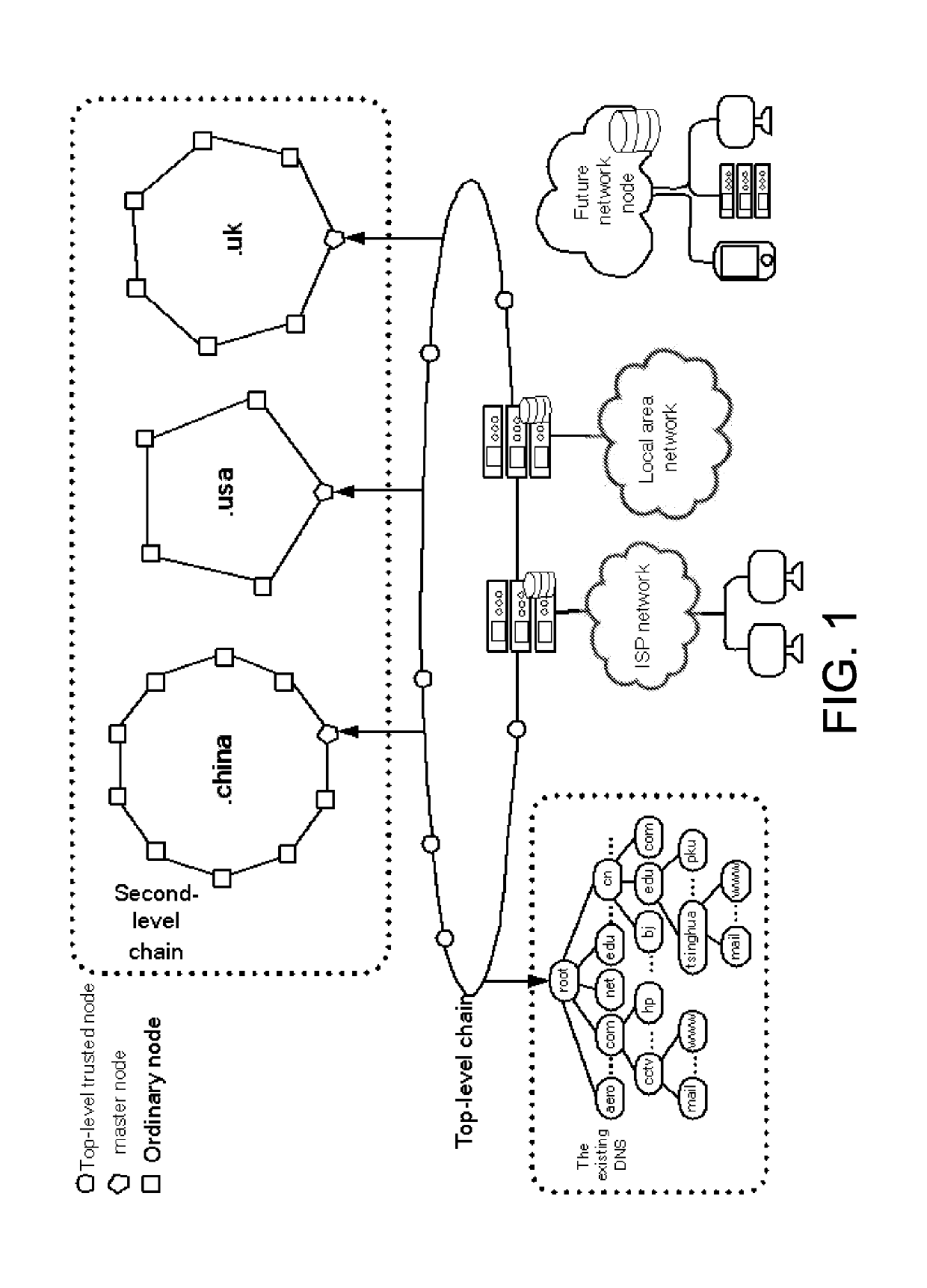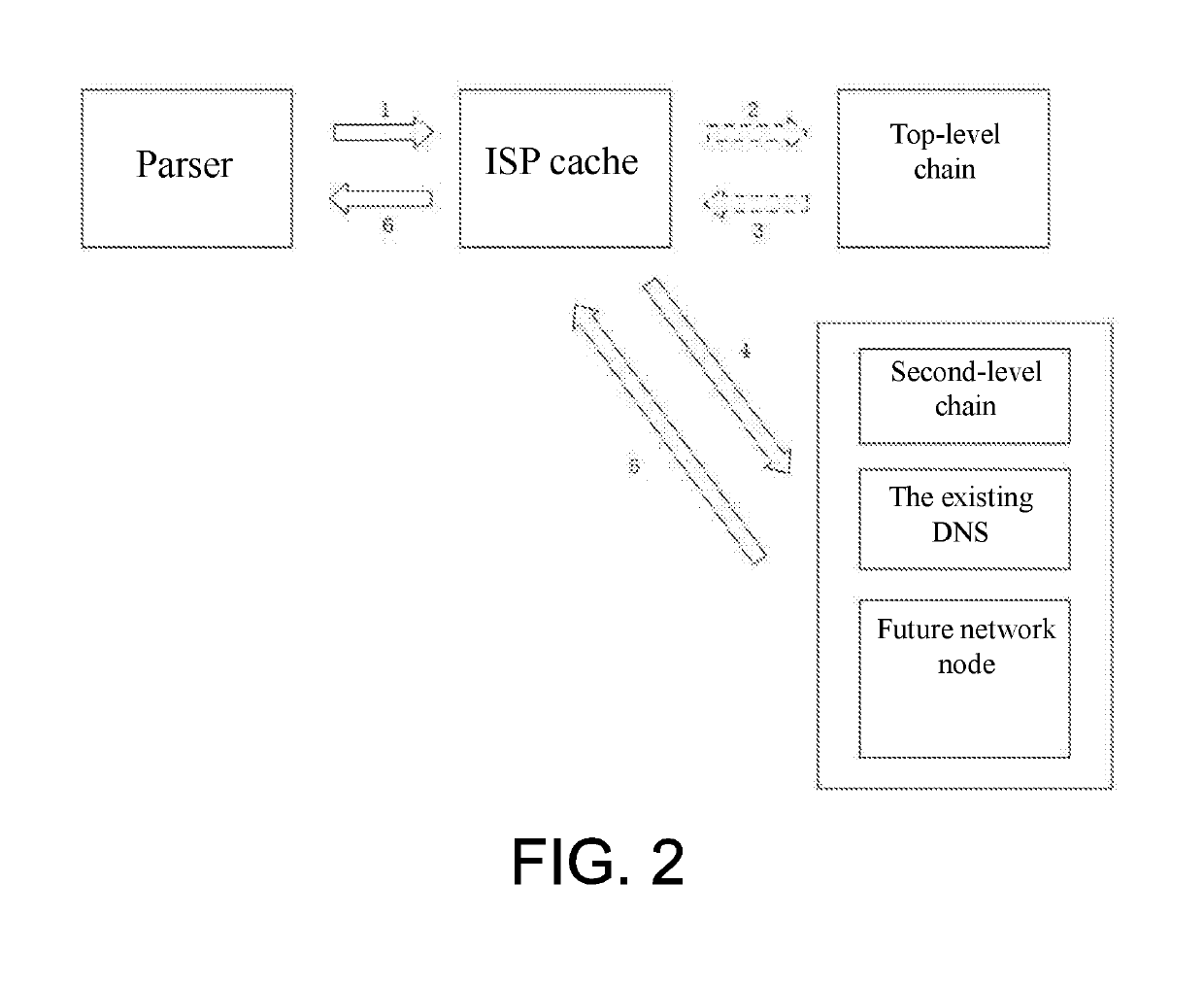Blockchain-based domain name resolution system
a domain name and resolution system technology, applied in the field of internet technology improvement, can solve the problems of inefficient management of domain names, network paralysis, and difficulty in being understood and remembered by humans, and achieve the effect of improving resolution efficiency, improving management efficiency of domain names, and quickly expanding the domain name resolution network
- Summary
- Abstract
- Description
- Claims
- Application Information
AI Technical Summary
Benefits of technology
Problems solved by technology
Method used
Image
Examples
Embodiment Construction
[0033]FIG. 1 shows a blockchain-based domain name resolution system provided in the invention, characterized in that the domain name resolution system adopts a layered structure comprising a top-level domain name chain network, a second-level domain name chain network, a future network node and an existing DNS system network; the top-level domain name chain network links the second-level domain name chain network, the future network node and the existing DNS system network respectively, and the top-level domain name chain network is used for each professional organization to deploy the server nodes having a reliable performance respectively to form a union blockchain network, wherein each node server records the information of all the current top-level domain name chains, the second-level domain name chain master nodes, the future network nodes and the root nodes of the existing DNS system; the second-level domain name chain network is used for the registration and management of dom...
PUM
 Login to View More
Login to View More Abstract
Description
Claims
Application Information
 Login to View More
Login to View More - R&D
- Intellectual Property
- Life Sciences
- Materials
- Tech Scout
- Unparalleled Data Quality
- Higher Quality Content
- 60% Fewer Hallucinations
Browse by: Latest US Patents, China's latest patents, Technical Efficacy Thesaurus, Application Domain, Technology Topic, Popular Technical Reports.
© 2025 PatSnap. All rights reserved.Legal|Privacy policy|Modern Slavery Act Transparency Statement|Sitemap|About US| Contact US: help@patsnap.com


